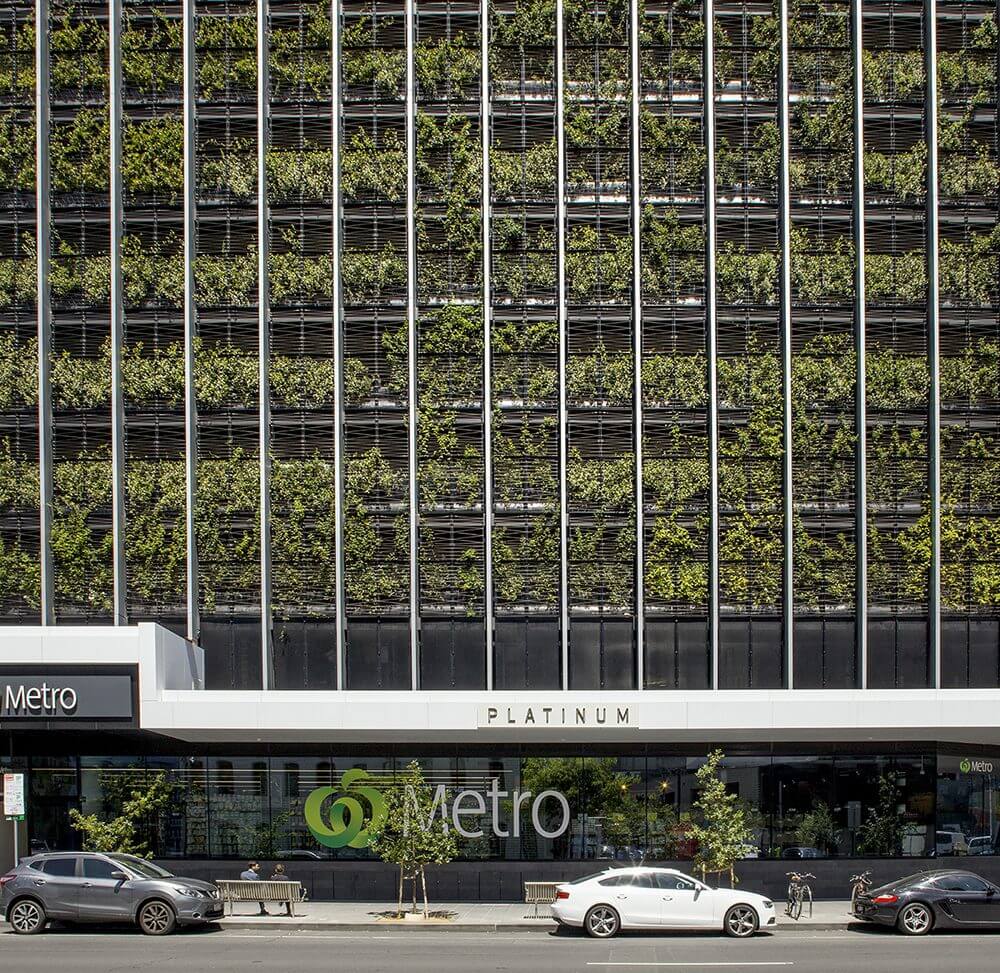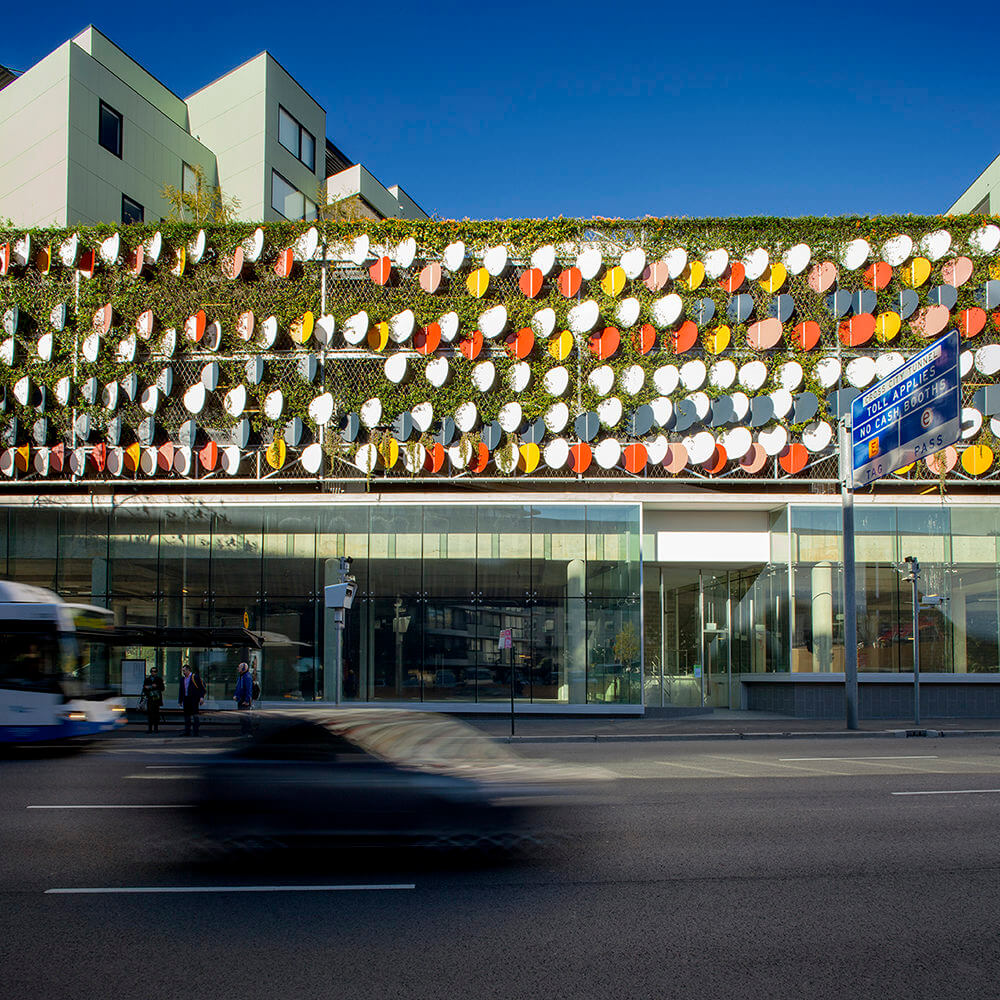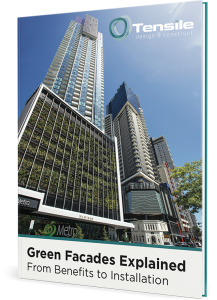By now it’s well-established that green facades, walls and roofs on residential, commercial and public buildings can offer a wide range of environmental and health benefits.
These include cleaner air through pollution absorption, reduced urban heat island effect and mitigation of the effects of global warming. According to the World Health Organisation, green spaces can also help reduce blood pressure and improve heart health and immunity. Some studies show greenery in an office environment can significantly reduce anxiety and feelings of overall negativity. Plus, there’s the fact that green spaces are just pleasant and calming to be around!
But what about sustainability?
Sustainability is generally described as the ability to meet our own needs without compromising those of future generations. Sustainability can be applied to many different systems – including urban design, construction, agriculture, transport, waste management, energy, industry and business.
‘Architectural sustainability’ is where the impacts of buildings are minimised – such as through energy efficiency and moderation in the use of materials. This could be achieved through energy-efficient building design, renewable energy systems, insulation, thermal mass and the use of reclaimed materials.
Green facades and other green infrastructure can also play a part in achieving greater sustainability in our communities, by reducing energy use and improving wellbeing.

How green facades can contribute to greater sustainability
While a green facade will require some input of resources to keep it thriving, such as water and plant maintenance and replacement, this could be more than offset by the reduction in other types of resource use.
Here’s how:
- Reduced energy for cooling. Facade plants can provide a cooling effect by reducing the level of solar radiation on the wall surface. This in turn reduces heat build-up and the need for cooling through air conditioning.
- Insulating effect. For example, where there is a gap between the foliage and the wall surface, it allows for an insulating layer and cooling breezes to be created. Studies show a gap of only 5cm is needed for this to occur.
- Water systems cooling effect. Cooling can be improved through evaporation caused by watering and hydroponic systems.
- Reduced building maintenance. A green facade on a wall can protect it from the effects of heavy rain and fluctuating temperatures, thus reducing the rate of damage and deterioration.
- Lower costs for businesses. An indoor green facade or wall can improve wellbeing in a workplace. It can also help reduce the incidence of ‘sick building syndrome’ – a term that describes building occupants complaining of various physical symptoms when inside for long periods. Improving staff wellbeing and comfort in this way can also reduce the costs associated with absenteeism and staff turnover, in turn helping to make the business more sustainable.
Contact us about green facades
We specialise in green facade installation for all kinds of multistorey buildings in Australia. To find out more, or to discuss your project idea, please contact our team.






































